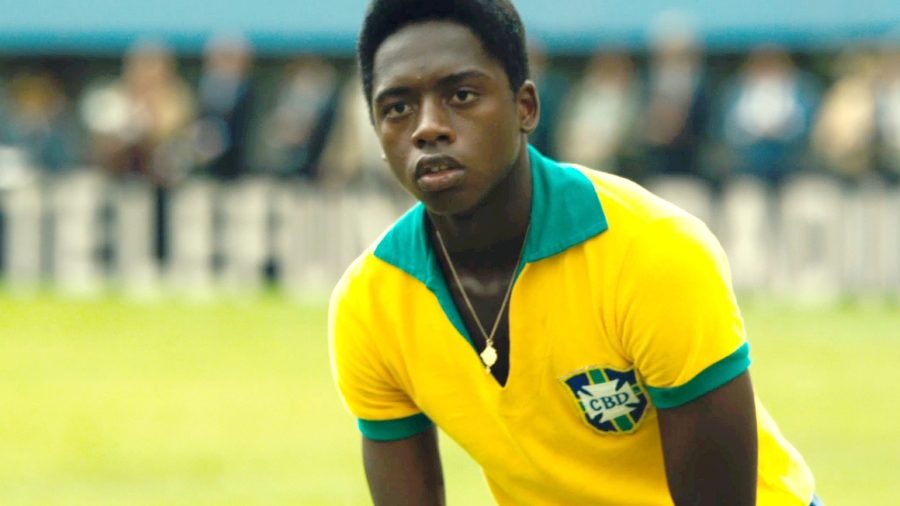Brazilian film inspires working class soccer players
Photo via Wikimedia Commons (Sebastianneuah) under Creative Commons license
Kevin de Paula, seen here playing in the 1958 World Cup final, portracy Pele in “Pele: Birth of a Legend.” In the movie, De Paula accurately portrays the struggles and accomplishments Pele fulfilled throughout his life.
May 28, 2018
With every soccer lover’s emotions high with anticipation and passion for the sport due to the 2018 World Cup being only a few weeks away, now is the perfect time to discuss the true beauty and meaning behind the movie “Pele: Birth of a Legend.”
The movie “Pele: Birth of a Legend” discusses Pele’s life and his accomplishments, but it also shows the hardships that he had to face throughout his life and career.
Edson Arantes do Nascimento, nicknamed Dico, and most popularly known as Pele, is said by countless critics, professionals, and fans all around the world to be one of the greatest soccer players to have ever lived. He was the eldest of three children and was born on October 23, 1940, in Três Corações, Brazil, later growing up in Bauru, Brazil.
His parents were João Ramos do Nascimento, nicknamed Dondinho on the field, and Celeste Arantes. Pele’s father was a Brazilian attacking center forward who struggled due to the little amount of money he would receive.
During those years, the job of a professional football player was among one of the lowest paying jobs in the country and because of this Pele grew up poor. There were times when Pele and his friends would use socks stuffed with paper and mangoes to practice the sport he had always loved.
One of the first scenes from the movie show Pele and his friends playing soccer in the street with a stuffed sock as a ball. When they played in a field against a more privileged team, the crowd named them “The Shoeless Ones” due to the fact that none of them could afford actual shoes to play soccer with.
However, if it were not for his learning to play soccer shoeless and in the street, Pele would have never found his “Ginga.” Ginga is a typical Brazilian style of play that grew popular once again after Pele and the rest of the Brazilian team won their first ever World Cup.
His passion for the sport would drive Pele to join small soccer clubs and his talent was recognized early on. By the mere age of 17, Pele was already playing as a forward for the Brazilian national soccer team. He later on went to win his country three World Cups and has been the only person to ever do so.
Throughout the movie, conversations between sports commentators can be heard talking about the Brazilian players. They would constantly point out the fact that they were a “mixed-race” team and blame their race on why Brazil performed so poorly.
When asked about Brazil’s 1958 World Cup victory Jose Lopes said that it “belied the erudite theories and racist stereotypes concerning the alleged weaknesses of mestizo Brazilian football.”
Before their victory, it was universally believed that “only by chance or contingency might [Brazil] become world football champions and establish hegemony in this sport … it was the first mestizo team to win a World Cup, at a time when the skin color of European players was universally white,” Lopes said.
Pele and the rest of the Brazilian team proved to the world that one does not have to be of a certain nationality or race to be successful. This victory gave lower class people of color everywhere opportunities to play and be more accepted in the world of soccer. The film “Pele: Birth of a Legend” makes a perfect representation of all of that.
This film is a truly inspiring piece of cinema and demonstrates that the future generations of every race, social class, or background can be successful and prosperous in any career path, including soccer.








